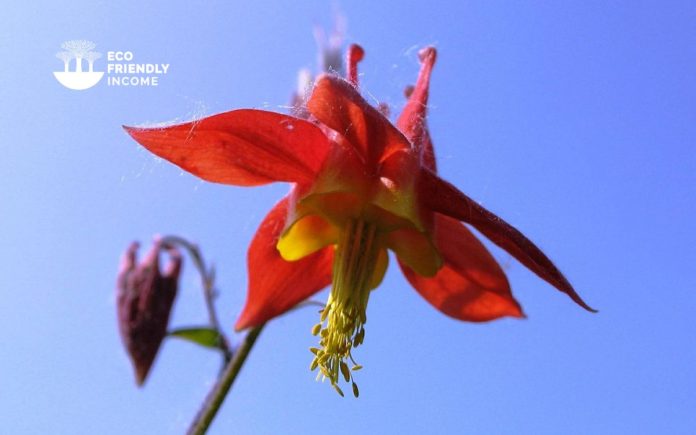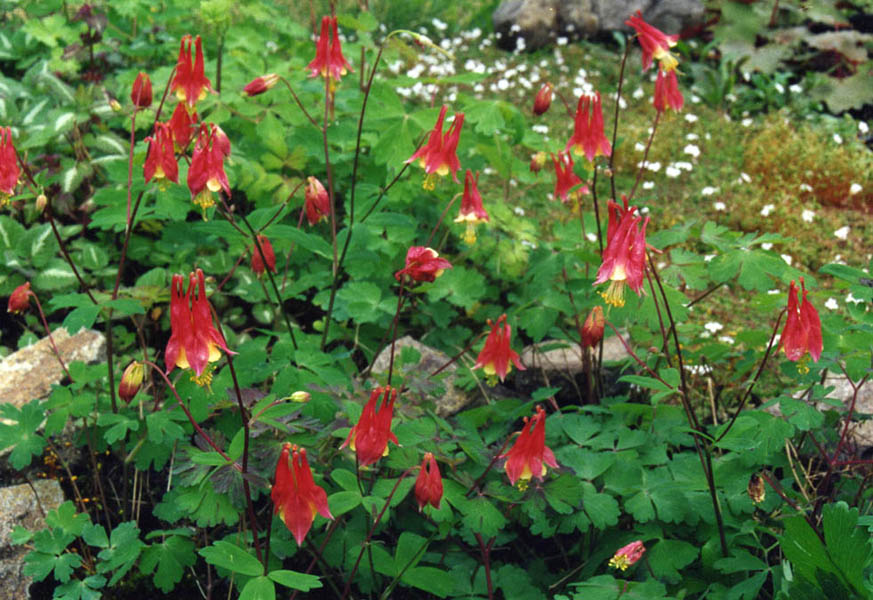
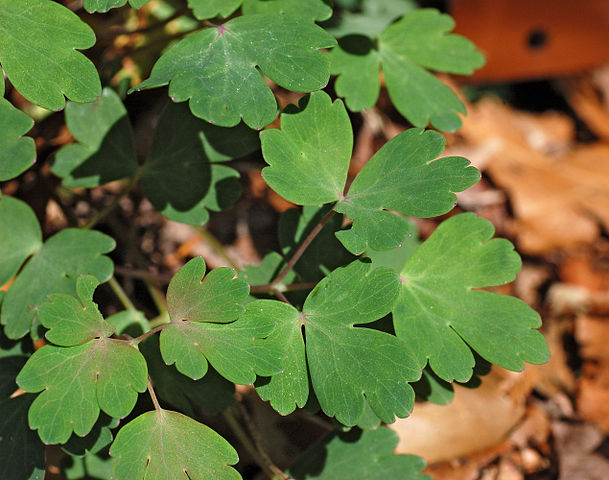
This guide is meant to teach you how to identify & propagate Canada Columbine (Aquilegia canadensis). Hopefully, it will make it easier for you to propagate wild plants & to sell them at your own nursery.

Hardiness Zone: 3-8

Soil Type: Chalk, Clay, Loam, or Sand.

Water: Low to Medium.

Exposure: Partial to Full Shade
Canada Columbine (Aquilegia canadensis) is an endangered perennial plant native from central to eastern North America. There are a few characteristics that can help you identify Canada columbine.
How to Identify Canada Columbine (Aquilegia canadensis)
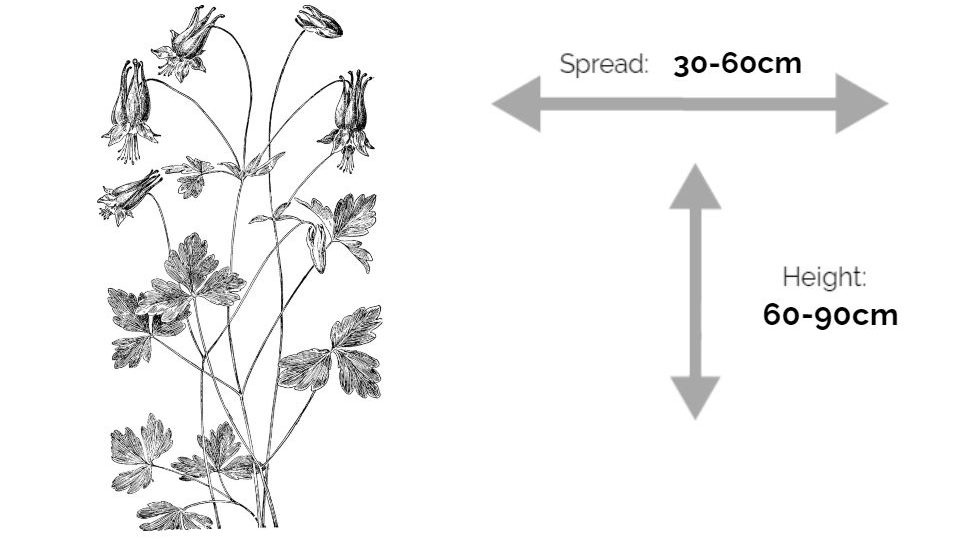
Leaves
Canada columbine leaves are inversely heart-shaped (obcordate) to fan-shaped (flabellate), their margins are entire, crenate, and lobed, and they grow in a trifoliolate structure on the stalks.
Their leaves are semi-evergreen with green to blue colors.
Flowers
Wild columbine flowers bloom from late spring to mid-summer. The beautiful red flowers are distinguishable by their drooping look with backward-pointing tubes. Each ‘tube’ contains nectar that attracts all sorts of long tongue insects and birds.
Habitat
It’s an understory-type plant found in the woodlands of central Canada to the East Coast and as south as Texas. They also grow on rock caps with little soil, on slopes, ledges, and even gravely shorelines, being tolerant to salt spray.
Here is the USDA PLANTS MAP of their distribution.
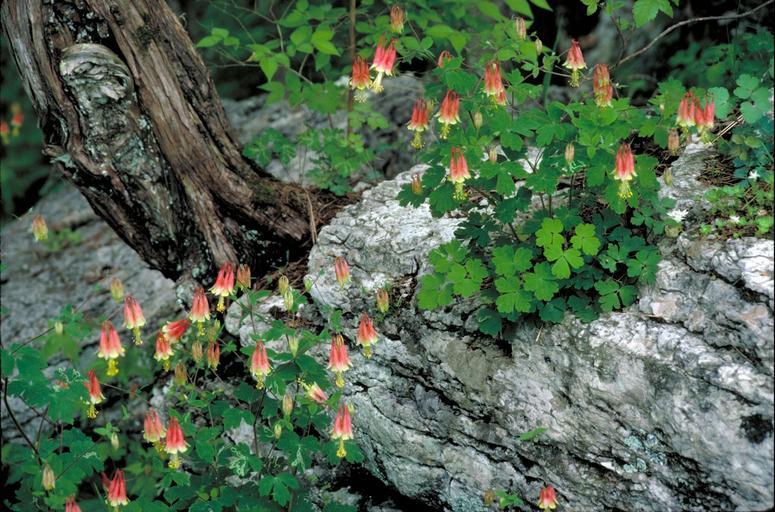
Canada Columbine Lifespan
They are generally short-lived perennials with a lifespan of 3-4 years. Being perennial, they will die back during winter but come back every spring with the warm temperatures.
Commercial value
Canada columbine has potential commercial value when propagated. The plant is used in traditional medicine & its beautiful showy flowers are much loved for landscaping and gardening.
Warning: This is an endangered species.
I don’t advise readily picking this wild plant. Instead, I recommend you to collect seeds and propagate them back home. This way the wild populations are minimally harmed and you can produce sources of the medicinal plant yourself.
Canada Columbine (Aquilegia canadensis) Medicinal Properties
- Antiseptic (Slows or stops growth of micro-organisms)
- Antiscorbutic (Prevents or cures scurvy)
- Aphrodisac (Stimulates arousal)
- Astringent (Shrinks or constricts body tissues)
- Calming (Relaxes and induces a sense of calmness)
- Choleretic (Increase the volume of secretion of bile from the liver)
- Depurative (Purifies or detoxifies)
- Diuretic (Helps your body eliminate salts & water)
- Emmenagogue (Stimulates or increases menstrual flow)
- Febrifuge (Reduces fever)
- Hypotensive (Lowers blood pressure)
- Oxytocic (Helps with childbirth by inducing contractions.
- Vermifuge (Destroys or expels parasitic worms)
- Vulnerary (Helps heal wounds)
For gardening, Canada columbine makes great eye-catching shade-loving plants.
Wildlife Value
Canada columbine is a beneficial plant for a variety of birds and insects.
For example, blooms attract hummingbirds, bees, butterflies, and hawk moths. Seeds are consumed by finches and buntings.
Some species of insects use columbine plants as larval hosts, such as the Columbine Duskywing Butterfly. These go after the foliage but won’t kill or seriously damage the plant.
Hummingbirds are the primary pollinator, they’ll submerge their heads into the upside-down flowers to extract the nectar.
Bumblebees and long-tongued insects are also common pollinators, oftentimes they’ll poke holes from the top to get to the juicy nectar.
If you look closely at the flower tops, you might even see one of those tiny pinholes.
Pests: Columbine leaf miners come late season and carve road-like paths into the leaves.
Best Way to Propagate Canada Columbine
How to Propagate by Seed
One sure way to propagate Aquilegia canadensis is by planting its seeds. Here’s how you can do it:
You can buy seeds online or harvest them yourself.
How to Harvest Columbine Seeds
You can get their seeds from the plant after the bloom finishes, here’s what they look like:
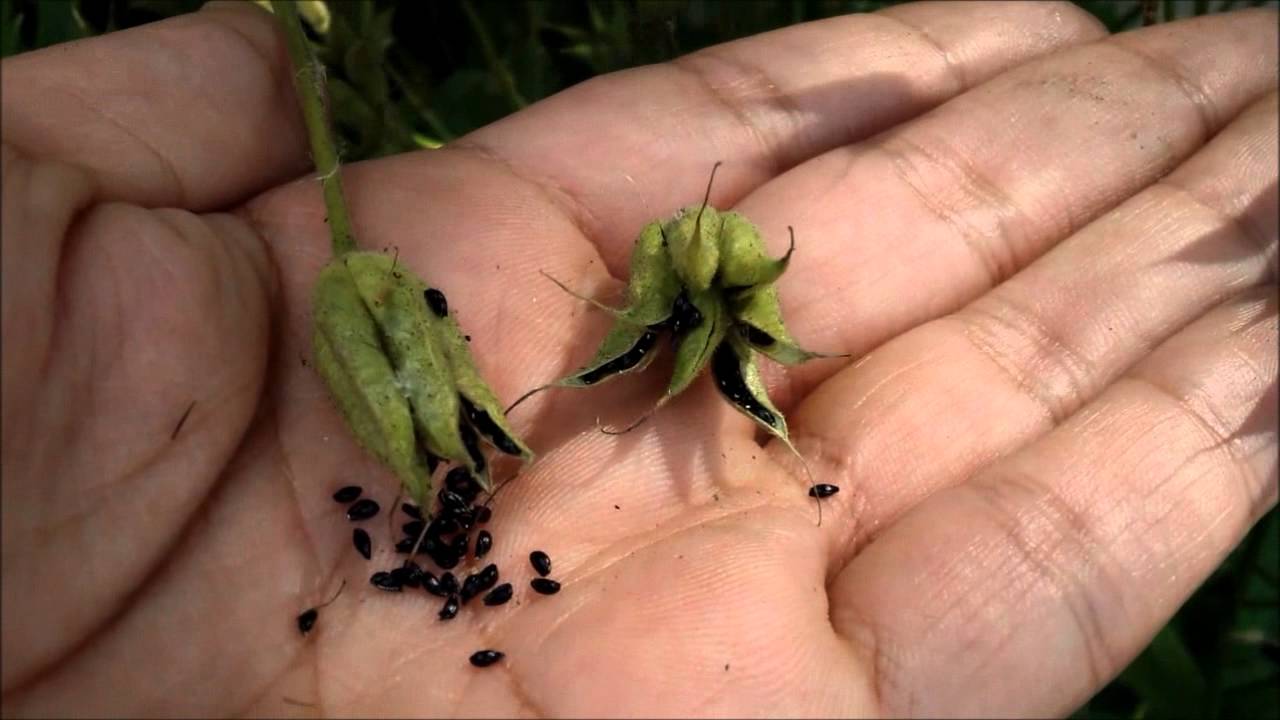
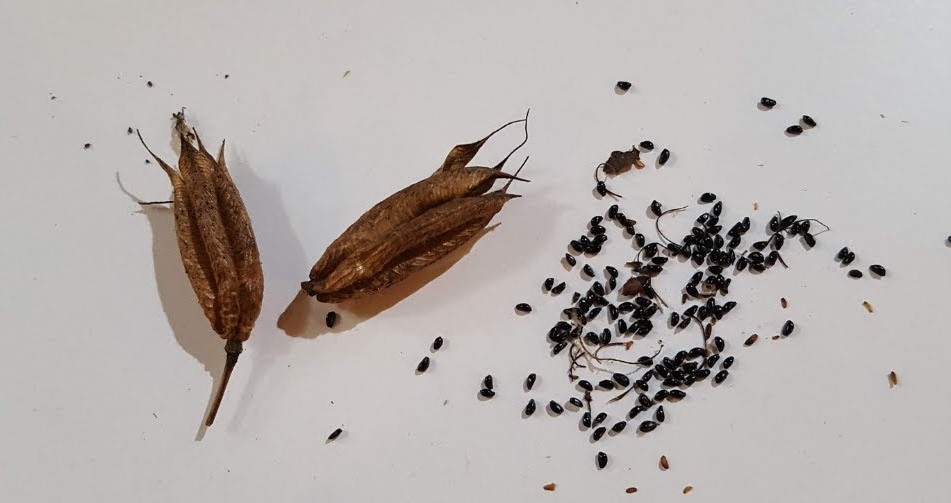
Mid to late summer is the best time to collect columbine seeds.
If they are still green, just place them in a paper bag until they dry up. After a week, just shake up the bag to release the seeds.
Each pod holds as many as 50 seeds! They self-seed vigorously, so once you plant some at home, you could get seedlings from the mother plant.
Where to Buy Canada Columbine Seeds Online
If you don’t see any wild plants near you, there are always online shops you can order seeds from.
Here is a good choice:
Do columbine seeds need cold stratification?
Yes since they are native to cold regions, they naturally only sprout after sitting under leaf litter all winter.
Aquilegia canadensis Seed Germination
If you want high success germinating your seeds, you’ll need to put them through stratification. Here’s how to do it:
Note: Start at least 5 weeks before outdoor night temperatures are reliably in the 10 C (50 F) range.
- Mix the seed with a slightly moistened, sterile, soil-less growing mix (Sand works great).
- Next, put the mix in a sealed plastic bag, tag it, then store it in a refrigerator for one day.
- The next day place the bag in the freezer for one day.
- Repeat this for one week, alternating between the fridge and the freezer.
- After stratifying, plant seed 3mm (1/8 inch) deep in pots.
- Keep moist but not soggy and very warm (21 C – 70 F).
- Finally, when seedlings are 5 cm (2 inches) tall or more, transplant into the garden spaced 30 cm (1 foot) apart.
Alternatively, you can plant your seeds in pots during fall and let them outside for the winter.
Propagate Canada Columbine by Division or Cutting
While it may be possible to propagate Canada columbine by division, it is not recommended.
This plant’s root system is too fragile to handle division well, but it’s worth a shot if you’re trying to save a plant.
In this case, this is what you do:
- Dig around the plant very carefuly to avoid breaking and cutting the smaller roots.
- Next, use water to clear the soil off the roots and expose them. You might have to do this pretty deep down since their root systems reach far below the surface.
- Now lift the plant out of the soil and snip off the majorty of the leaves and the longer shoots. Take them down to 5-6cm (2 inches) each, with the exception of 2-3 of the youngest shoots.
- Finally, split the root stock in two slicing down, make sure to sterilize your knife first.
From there you can plant the divisions in boxes, using light but nutritious soil, like compost.
Finally, keep them away from direct sunlight, let them sit partly shaded. With luck, the plant will bounce back, but it’ll take some time to recover.
Cutting is also not recommended since the stems are not strong enough to endure the process.
Canada Columbine Growth Rate
Columbine seedlings will take some time to grow into robust plants. You likely won’t see blooms until the second or third year.
FAQ
Q: Is Canada Columbine poisonous or edible?
A: Flowers are the only edible part of Canada Columbine, the rest of the plant contains toxins and should not be eaten. The leaves, seeds, and roots of Canada Columbine are toxic to dogs, cats, and humans.
That’s it, that should have you covered to multiply your plants!
Let’s go propagate Canada Columbine!
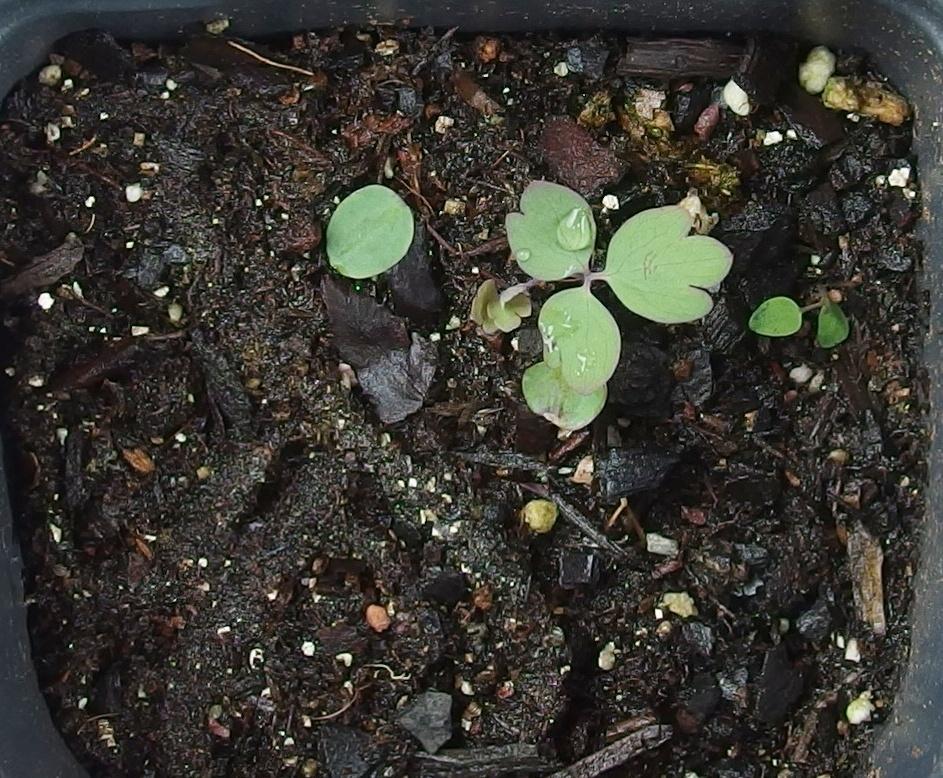
Got any questions or tricks to add? Don’t be shy to comment below and spark up a conversation!

